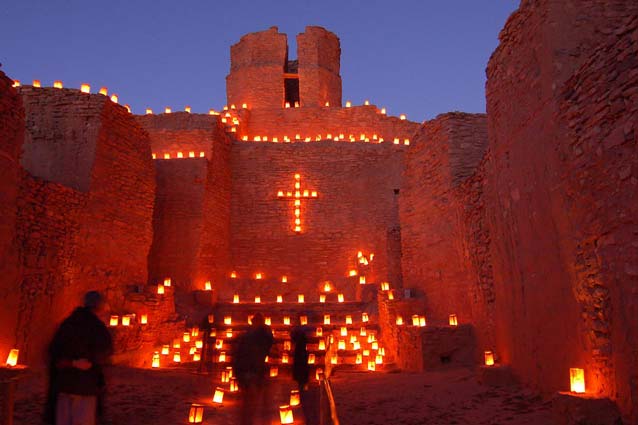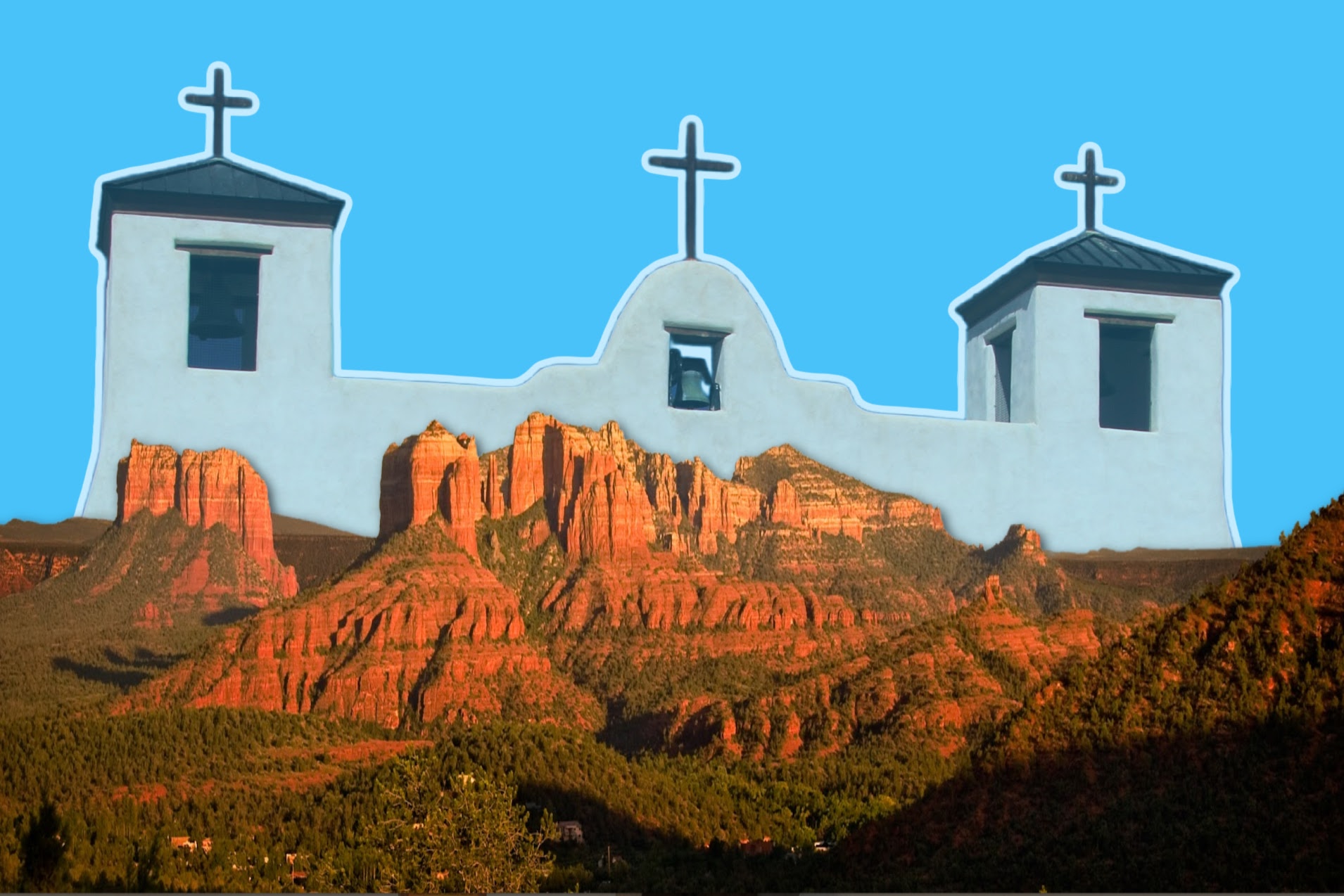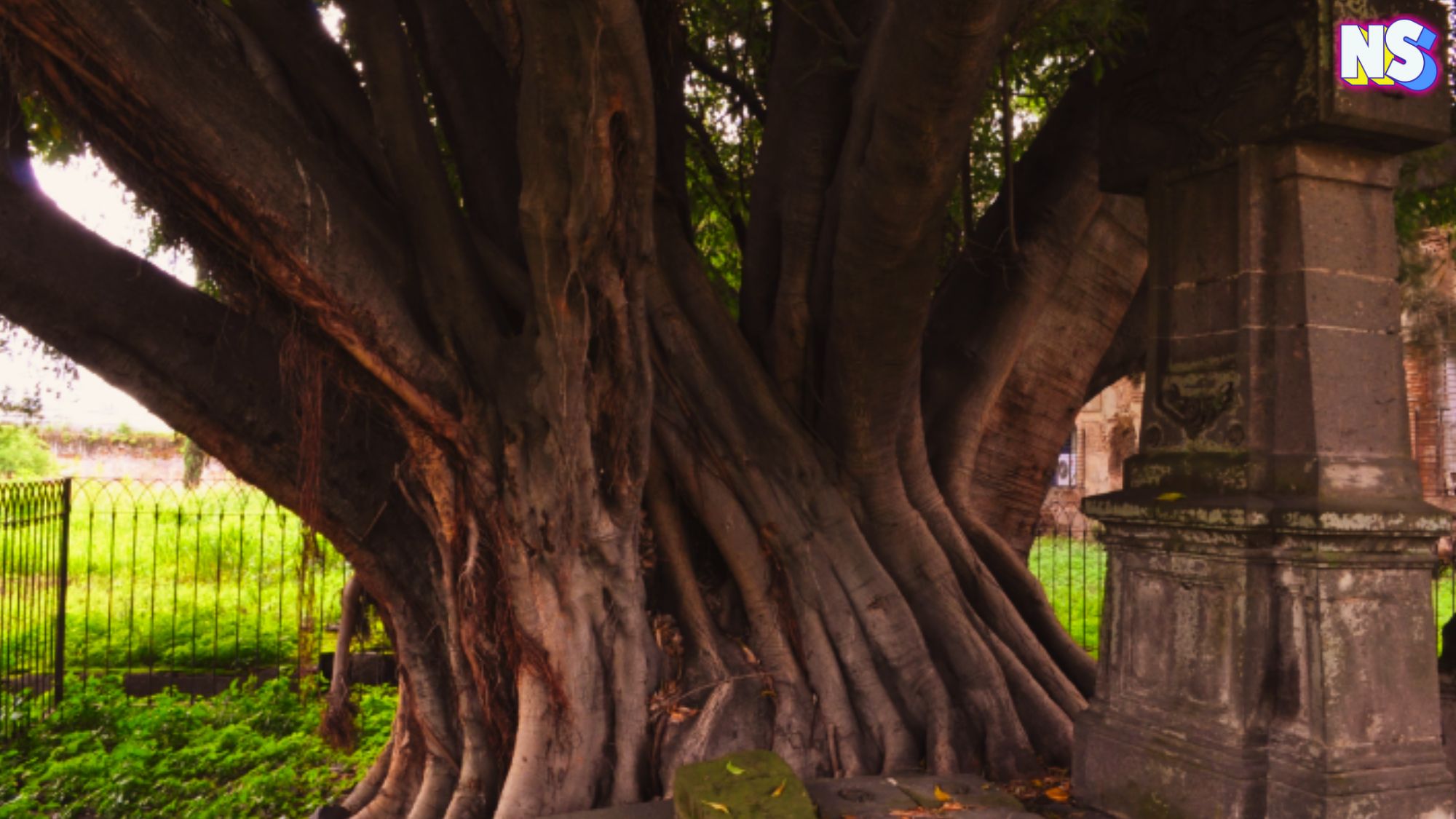Credit: Lorin Granger/HLS Staff Photographer
Throughout the Spanish colonization, one of the themes most often utilized to convert the Indigenous and access their land, was religion.
The Catholic church, and its teachings, were prevalent tools used to assimilate the Indigenous tribes into the Christian mindset.
One way they could do that was by allowing many of the tribes' architectural buildings to become infused into the missions that began to crop up as the Spaniards spread.

Lands now known as Texas, Arizona, and New Mexico saw dozens of missions littered across their landscape as the years passed, and are now part of a historical itinerary.
Currently, there are 35 separate missions listed on the Southwest Travel Itinerary. Each mission holds a piece of the ancestors within its walls.
From the essence of their spirits to the remnants of their practices to the adobe-lined walls mimicking the pueblos the ancestors once resided in, each Mission has its own place in the history of the formation of what is currently known as America.
Though many of the missions on the itinerary may be recognizable, the Mission San Antonio de Valero is probably the most well-known in terms of historical moments within its walls. You may know it better by the name it is now known by – The Alamo.
The Battle of the Alamo was fought between Mexico and the Republic of Texas in 1836.
After Mexico won its independence from Spain in 1821, many Americans moved to Texas, which was then a part of Mexico, and became Mexican citizens until 1830, when a powerful man, General Santa Anna, took control of the Mexican government.
The Americans who had moved to Texas were unhappy with Santa Anna and declared Texas’ independence from Mexico in 1836.
General Santa Anna managed to take it all back, giving rise to a two-week-long battle that ended with every Texas soldier killed.
Fun facts:
- By definition, the "mission" was nothing more than a conversion plan.
- The missionaries, who usually worked alone or with an escort (usually one or two armed guards), would approach a group of natives and with a portable altar to say mass would begin preaching through a translator.
- In theory, the missions on the itinerary were designed for a period of ten years, after which the missionaries were expected to move to newly established areas.
- In the late eighteenth century, and especially after the Latin American independence movement from Spain, newly established revolutionary governments removed mission lands from the authority of the Church.
If you go:
You can organize an entire road trip through the itinerary (which can take up to 14 days) by following the map here.





